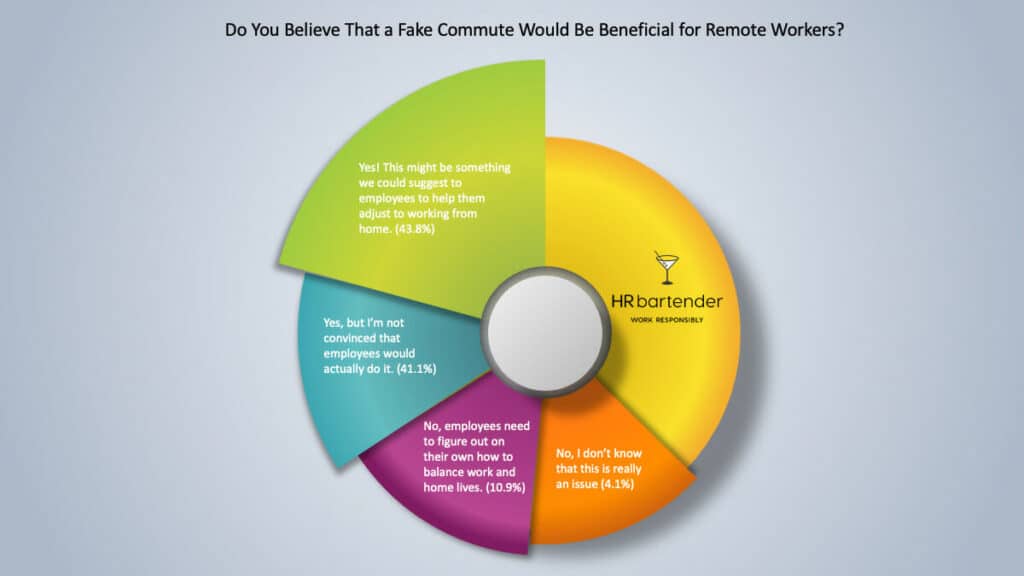A Fake Commute Might Be Helpful if People Actually Do It
A few weeks ago, I wrote an article about whether you should add a “fake commute” to your daily routine. A fake commute is an activity that we do at the beginning and end of our workday to draw separation between our work and home lives. The way a commute does when we work in an office environment. In the article, I asked you what you thought of the fake commute idea. You can see what you said in our graph above.
My big takeaway from the results is that a fake commute might be helpful if people actually did it. And honestly, that’s a huge issue with remote work in general.
One of the biggest advantages to remote work is the flexibility. That being said, remote work requires discipline and time management. The key is being able to do both at the same time.
FLEXIBILITY. Remote workers have the ability to respond to last-minute requests or deal with the unexpected. It’s a huge benefit. As someone who works from home, it’s been helpful to be able to put my work on hold to run out to get emergency supplies when a hurricane is coming. Or if I don’t feel great, I can take a nap and work later in the day. Flexibility could make it very easy to build a fake commute into our workday. Maybe we walk around the neighborhood in the morning and do The New York Times crossword puzzle in the afternoon. We can do whatever makes us feel good.
DISCIPLINE. While it may be easy to build a fake commute into our workday, it can be hard to actually do it. We might get distracted doomscrolling the latest news. Or the weather might be cruddy, and we simply don’t want to take that walk outside. I’m sure we all realize that to get the benefit of a fake commute, we need to do it. It reminds me of the Seinfeld writing method. Just do it every day. It doesn’t have to be perfect. But every day we do it will make it more a part of our routine.
TIME MANAGEMENT. Even when we have a tremendous amount of flexibility, we still have deadlines that we need to meet. If by chance, one of those deadlines interferes with our fake commute, that’s okay. Just do it the next day. But make sure you really do it (see the paragraph on discipline above). Or, on those days when you can’t do a fake commute, come up with a Plan B. Maybe it’s a short meditation during lunch. It’s possible that the Plan B activity will be a refreshing change of pace that accomplishes the same goal as a fake commute.
I wouldn’t let these poll results deter anyone from adopting a fake commute or suggesting it to others. Keep in mind that the benefits happen when it becomes a part of your routine. Think about how you would hold yourself accountable for doing it each day. And organizations might want to think about how they can help and support employees who are trying to develop new habits.
18